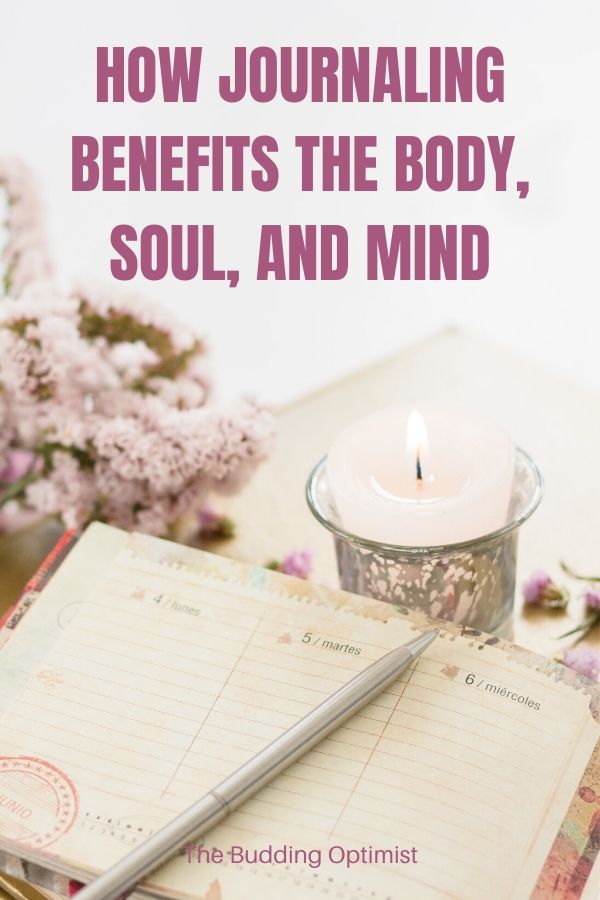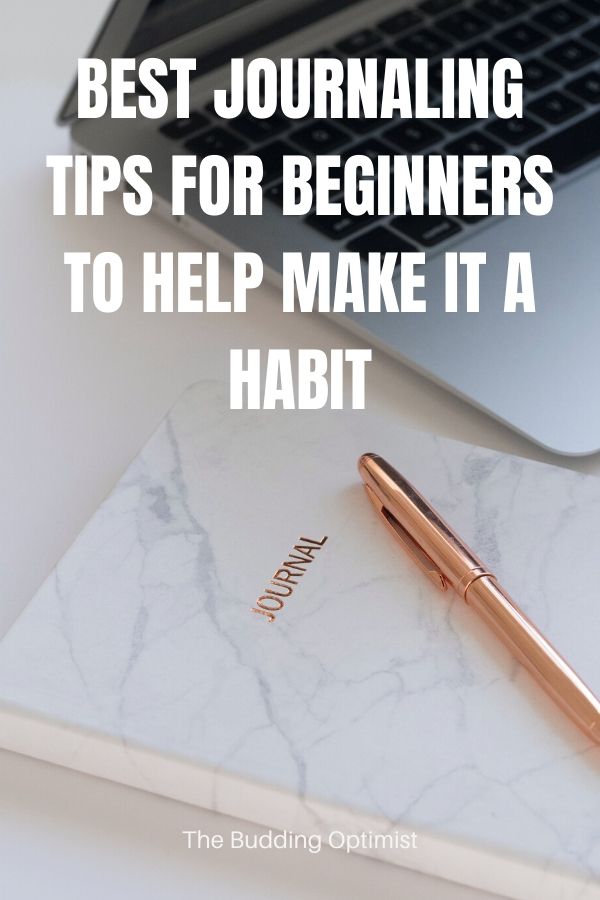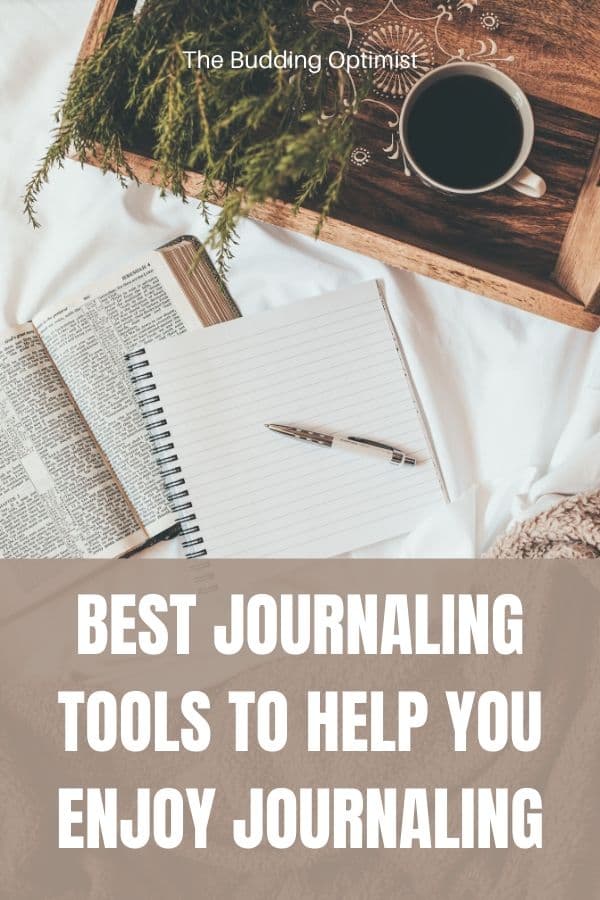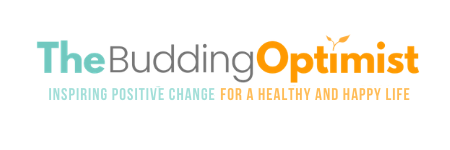How to Start Journaling: Best Tips, Tools, and Journal Prompts for Beginners
Get your pen (or typing fingers) ready, because this post is going to inspire you to start journaling.
Yep, it’s all about journaling in this article—what to write, which tools to use, and how you can turn it into a habit that sticks. I’ll even provide you with some of the best journal prompts I’ve used in the past to help you get going.
Whether you’re a complete beginner to journaling, someone who has tried journaling before but could never stick with it long enough to make it part of their routine, or a long-time journal lover, you’re going get something out of this post.
So are you ready?
First, although I’m sure you know a lot of this already (or you wouldn’t be here right now), let us look at why journaling is good for the body, mind, and soul.
This post contains affiliate links, meaning, at no additional cost to you, I will earn a commission if you click through and make a purchase. As an Amazon Associate, I earn from qualifying purchases. Read the full (warning: it’s boring) disclosure here.
Contents
What Are the Benefits of Journaling?

Journaling has many benefits for our mental wellbeing, including the following:
- Anxiety and stress management. Journaling can help us recognize stress triggers and symptoms of anxiety, thus allowing us to take proactive steps that will help us cope more effectively.
- Deep personal insight. Journaling provides us with insight to how we talk to ourselves, what we think and how we behave. When we understand ourselves better, we have more control over our actions and reactions.
- Greater self-love. Journaling gives us the chance to catch unproductive self-talk thinking patterns and make positive adjustments to them. This enables us to have more compassion and love for ourselves.
So we know journaling is good for the mind and the soul, but did you know that it’s also good for the body? This is true especially for those suffering from a serious illness.
Research shows that the practice of writing about one’s emotions and stress is linked to an increase in immune functioning in patients with HIV/AIDS, asthma, and arthritis. Writing about stress, as these studies suggest, kept these patients in better physical health for a longer period of time.
I bet now you’re itching to begin journaling. Now starting is the easy part—anyone with any kind of writing tool can start journaling, but the hard part is to make it a consistent habit.
For that, I have a few tips to help you make journaling a permanent part of your routine.

Best Journaling Tips for Beginners to Help Make It a Habit
1. Keep It Simple
Have you seen those stunning bullet journals that look like Picasso’s diary with all kinds of drawings, diagrams, and a gazillion colours? They look spectacular and all, but if you’re new to journaling, that whole concept is going to be waaaay too overwhelming.
So do yourself a favour and keep it simple (for now at least). The only tools you really need are:
- A quality notebook
- A pen that’s easy to write with.
- A journaling app or online journal if you prefer to go digital. I’ll talk about some great options for digital journals later in the post.
That’s it! Start with basic tools and write only a few minutes a day. Simple, quick, and no fuss. Remember, the more you strip down the process, the easier it is on you, and the more likely you’ll keep doing it for the long run. And besides, you can always add more pizazz later.
2. Apply the Stephen Duneier Method
What’s the Stephen Duneier method? I talked about it extensively in my post “How to Achieve Your Goals and Dreams With Ease”.
It’s a method used by some of the world’s most successful entrepreneurs and athletes to help them accomplish their biggest goals. And Stephen Duneier himself used this method to set the Guinness World Record for crocheting the largest granny square—among other less eccentric but equally amazing feats.
The method is so simple it’s mind-boggling: You take whatever it is you want to achieve and break it down to small, actionable tasks that you can easily accomplish every day. The idea is to make the tasks so easy that you won’t be able to make any excuses not to do them. And then once you’ve mastered those tasks, you can slowly add a bit more.
For example, start with writing just one word in your journal every single day. Just one word. Then next week, make it two. After you do that enough times, write a whole sentence. Then perhaps two sentences the week after that.
The whole point is to gradually build up your willpower to keep this habit in your routine for good.
3. Find an Accountability Partner
Hey, I get it, it’s hard to start (and stick to) a new habit all by yourself. That’s why I really encourage you to find an accountability partner who can help you work on turning journaling into a daily habit.
What is an accountability partner? It’s someone who can motivate you, give you tough love when you need it, and keep you on track with your progress. And you do the same for them. You support each other while you both move forward toward your goals.
Many people rely on someone close to them—such as their friends, family, or coworkers—as their accountability partner. You can certainly do the same. But be aware that you might run into some issues.
One problem you might encounter this approach is that because these people know and love you, they might not be able to deliver the tough love you need to stick to your habit. And on the other hand, because you know and love them, you might not feel the pressure to follow through.
What’s the big deal if I miss a few days? I’ll just tell mom that I’ll do it later.
I know that problem all too well. My hubby and I both set fitness goals for ourselves a few months ago, and we were supposed to hold each other accountable.
Fast forward a few months later, both of us have gained weight and lost muscle mass. Clearly our accountability partnership didn’t work! That’s why I was so excited when an app called Supporti reached out to me about their unique service—pairing people all over the world together as accountability partners (or what they call “accountabilibuddies”) through their online platform.
This is how Supporti works:
- You create a profile and the app helps you determine one goal and one daily action to focus on for each session.
- The app matches you up with a Superbuddy for your first session, which lasts 3 days, to help you learn the ropes of how this program works.
- After your first session, you can keep the same goal or adjust it and start a new 7-day session with a new buddy.
- After each session, you and your buddy rate each other on the experience and you can decide if you want to be paired up again with them in the future.
Since I started using the program, I’ve been feeling more motivated to keep to my fitness goal and my daily action because I know I have to answer to someone who doesn’t know me and won’t care for my excuses. The fact that the program emphasizes “one daily action” (another vote for the Stephen Duneier method) also helps tremendously. I liked the app so much that I signed up to be a partner!
4. Harness the Power of “If-Then” Statements
How can you use something that sounds like a formula from Excel to help you start journaling and make it a lasting habit?
First, think about a possible obstacle you might encounter in your effort to start journaling. For example, you decide you’re going to write in your journal every morning when you wake up, but what if you wake up late one day and don’t have the time?
This is where you would develop a contingency plan in the form of an “if-then” statement.
“If I wake up late and don’t have the time to journal, I will take 5 minutes from my lunch break to journal.”
Sounds simple right? But it’s so powerful.
In the 90’s, a psychologist by the name of Peter Gollwitzer conducted experiments on goals and motivation, and he found that by simply creating an “if-then” plan like the one I mentioned above, the success rate of the goal more than doubled.
You can read more about “if-then” statements and how they help us form powerful habits in James Clear’s New York Times bestselling book “Atomic Habits”
5. Cue & Reward
One of my other favourite books on habits and motivation, “The Power of Habit” by Charles Duhigg, talks extensively about a 3-step neurological pattern that forms the basis of every habit:
- Cue—a trigger that signals your brain that it’s time to engage in the behaviour.
- Routine—the action that you take in response to the trigger.
- Reward—either an immediate or delayed feeling of gratification that helps you adopt the habit. The more immediate the reward, the easier it is to commit to the habit.
So what you can do to help start this 3-step process is by a) setting a cue (like setting an alarm that will remind you to journal every day) and b) rewarding yourself with something you enjoy immediately after you finish journaling (or while you do it).
For example, if you love drinking a particular flavour of tea, you could make yourself one every time you sit down to write in your journal. Soon, it’ll become a ritual that you look forward to doing every day!
Now that you have some good tips on how to start journaling, let’s check out some awesome and creative journaling tools that’ll make the experience extra enjoyable.

Best Journaling Tools to Help You Enjoy Journaling
1. Journey
I love the concept of having a digital journal because you can easily carry it with you wherever you go—this is crucial for busy gals like myself.
And my favourite digital journaling tool to use is Journey.
What is Journey?
Journey is an award-winning app ( Google Editors’ Choice 2016 – 2020 and iOS App Store’s App of the Day in 2019 to name a few), and a popular one to boot with millions of downloads to date. Its aim is to become a “sanctuary for your mind and soul” and help users increase positive energy, be more grateful, and find more inner peace through the experience of journaling.
Once you sign up with your Google account, you can make journal entries from all devices and have the peace of mind that they’re synced and backed up so you can easily find them when you need to (and won’t have to dig through the basement closet).
Although I’m more of a minimalist when it comes to journaling, I like how Journey gives you the option to add more “pizazz” to your entries by allowing you to insert pictures, identify your current activity (eating, walking, etc.) and even declare the mood you’re in with just a few taps on the screen. I don’t use these features all the time, but they’re fun to have as extras to spice up your journaling.
But the best part about Journey is a key feature called “Journey Coach.”
It provides daily journal prompts to users that focus on themes related to wellness, relationships, self-care, and personal development. Once you select a coaching program on the topic you’re interested in, you receive a daily journal prompt that will help you reflect and write. The aim of the program is to encourage you, through the use of targeted, thoughtful prompts, to find your way towards the positive changes you want to make in your life.
Sign up for Journey today (membership is less than $3 a month) and start journaling your way towards a healthier and happier mind!
2. Daylio
Daylio is hands-down the best journaling tool for anyone who’s brand-spanking-new to journaling and just can’t motivate themselves to write (and that’s okay!)
With Daylio, you can pick your mood and identify activities you’ve been doing during the day. If you feel like it, you can add notes and turn it into a diary, but it works just as well without any words at all. It’s my go-to journaling method for those days (or weeks) when I just don’t feel like writing anything down.
My favourite feature of the app is the helpful charts and reports it produces based on your activity and mood entries. These reports provide clear information in a visually-appealing way to help you understand your habits and mood patterns. And when you understand these patterns better, you’ll be better equipped to create more productive ones.
Download Daylio for free from Google Play or the App Store.
3. Burn After Writing
Burn After Writing is an Amazon bestselling personal diary that promises to “push your limits” by challenging you to “play a game of Truth of Dare with yourself”.
Sounds intriguing!
It takes traditional paper journals up a notch by providing one insightful question after another that will get you to think deeply about who you really are, where you came from, and where you want to go in life. The idea behind the name of this journal is that if you were to answer every question honestly, perhaps you’d want to set it in flames in order to keep whatever’s inside a secret forever.
Whooooh!
4. The Five Minute Journal
The Five Minute Journal is another fantastic tool for those who love the look and feel of a traditional paper diary but need some inspiration to help them start writing.
And unlike the other journaling tools I mentioned so far, this one takes a very structured approach by laying out its daily content into two sections: a morning routine section and a night routine section with prompts, inspiring quotes, affirmations, etc. that are designed to help you prioritize, express gratitude, and self-reflect.
What I like the most about this journal is that it helps you start the day with positive intentions and end the day with introspection and gratitude. And gratitude, as more and more research shows, boasts plenty of benefits for our mental health. I, for one, believe with my whole heart that gratitude is what saved me from the darkness of depression at some of the lowest points in my life, and it is gratitude that continues to lift me up every day.
But hey, don’t just take my word for it. Why not see for yourself what gratitude journaling can do for you?
5. Wreck This Journal
When you think of journaling, what images come to mind? Writing neat lines in a notebook? Typing into an app?
Wreck This Journal is going to smash any previous notions you have about journaling and replace it with a crazy, beautiful-in-a-messy-way kind of fun.
With its endless eccentric prompts for colouring, collaging, and shredding, Wreck This Journal is a dream for anyone who loves to express with art more than words while leaving just enough space for you to pour your thoughts (or more like vomit your thoughts) on the page.
I’m not going to lie, if you’re a perfectionist, you’re going to hate this journal. But maybe it’s the exact thing you need in order to learn the art of letting go.
What to Write in a Journal: Best Journal Prompts for Beginners
To help you kickstart your journaling routine, here’s a list of 30 of my favourite journal prompts that inspire happiness.
Before you go, remember to leave a comment below to let me know your favourite method of journaling and if you have any journaling tools that you would recommend!
Recommended Articles in Mental Wellbeing & Personal Growth:
How to Stop Excessive Worrying (Plus Free Workbook to Help You Curb Rumination for Good)
70+ Healthy Habits You Should Start This Year for a Healthy and Happy Life









Thank you so very much Sabrina. I am very excited to start my journey. I am checking out all of your tips and methods. I really want to make this part of my daily life.
Peace KJ
That’s awesome KJ, hope you stick with journaling!